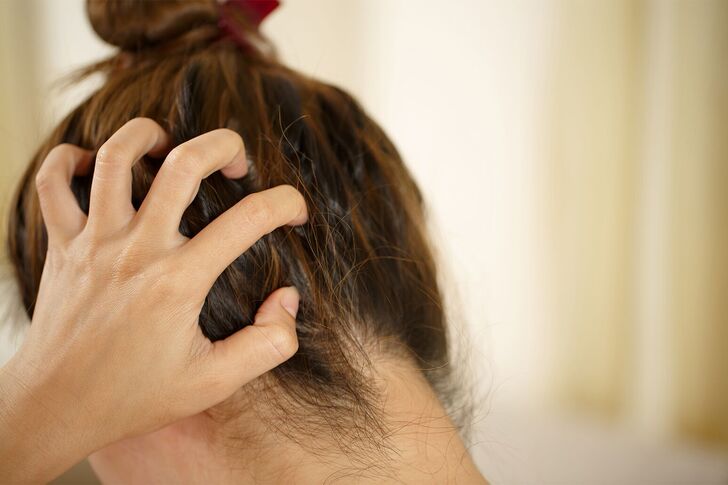What Is Plaque Psoriasis? Key Facts You Should Know
Plaque psoriasis is a chronic autoimmune skin condition that speeds up skin cell growth, causing thick, scaly patches called plaques. As the most common form of psoriasis, it affects millions globally. While not contagious, it severely impacts physical and emotional well-being. This article will cover its types, causes, symptoms, and latest treatments.

Types of Psoriasis
There are five main types of psoriasis, with plaque psoriasis being the most prevalent. The other four types include:
- Guttate psoriasis: Small, red, drop-shaped lesions mainly on the arms, legs, and torso.
- Inverse psoriasis: Red, shiny lesions found in body folds such as under the breasts or in the groin.
- Pustular psoriasis: White pustules surrounded by red skin, which can occur on the hands, feet, or the entire body.
- Erythrodermic psoriasis: A severe form that causes widespread redness and scaling, often requiring immediate medical attention.
Plaque psoriasis, the focus of this article, accounts for 80-90% of all psoriasis cases. It manifests as raised, red patches covered in silvery-white scales, commonly appearing on the elbows, knees, scalp, and lower back.
Causes of Plaque Psoriasis
While the exact cause of plaque psoriasis is not fully understood, it is believed to be a combination of genetic and environmental factors. The immune system mistakenly attacks healthy skin cells, leading to rapid cell production. Some common triggers include:
- Genetics: Approximately 10% of people inherit genes that increase their risk for psoriasis, though only 2-3% develop the condition.
- Stress: High-stress levels can weaken the immune system, exacerbating symptoms.
- Infections: Bacterial or viral infections, such as strep throat, can trigger flare-ups.
- Skin injuries: Physical trauma, such as cuts, burns, or bug bites, may lead to the appearance of plaques.
- Medications: Certain drugs, like lithium, beta-blockers, and antimalarials, may trigger or worsen psoriasis.
Symptoms of Plaque Psoriasis
The primary symptom of plaque psoriasis is the appearance of red, raised patches of skin covered with silvery scales. These patches can vary in size and are often itchy or painful. Other symptoms include:
- Dry, cracked skin that may bleed
- Soreness or burning sensations around affected areas
- Thickened or ridged nails
- Stiff and swollen joints, especially if psoriatic arthritis is present
Symptoms can range from mild to severe, and the severity often fluctuates over time due to various triggers.
Stages and Treatments for Plaque Psoriasis
Plaque psoriasis progresses through several stages, each requiring different treatment approaches. The table here outlines the stages of the disease and their corresponding treatment methods:
| Stage | Characteristics | Treatment Methods |
|---|---|---|
| Mild | Small, isolated patches with minimal scaling | Topical treatments (corticosteroids, vitamin D analogs), moisturizers |
| Moderate | Larger areas covered by plaques, noticeable discomfort | Phototherapy, stronger topical treatments, systemic medications |
| Severe | Extensive body coverage, severe itching, or pain | Biologics, systemic treatments, UV therapy |
| Erythrodermic/Pustular | Life-threatening symptoms, entire body affected | Hospitalization, high-dose biologics, systemic therapies, intensive care |
Early diagnosis and consistent treatment can help prevent severe flare-ups and control symptoms effectively.
Latest Treatments for Plaque Psoriasis
Medical advancements have revolutionized the treatment of plaque psoriasis. Here are some of the latest therapies:
- Biologics: These drugs target specific parts of the immune system and have shown high efficacy in reducing symptoms. Common biologics include adalimumab, ustekinumab, and secukinumab. They are administered through injections or infusions.
- Oral Systemic Treatments: Traditional systemic treatments such as methotrexate and cyclosporine suppress the immune system. Newer treatments, like apremilast (Otezla), offer a more targeted approach with fewer side effects.
- Phototherapy: Light therapy, particularly narrowband UVB, is effective in slowing the rapid growth of skin cells. It is often used in moderate to severe cases and can be combined with other treatments.
- Topical Treatments: For milder forms of plaque psoriasis, corticosteroids and vitamin D analogs remain first-line treatments. These help to reduce inflammation and scaling.
Here is a table listing some of the leading treatment centers for plaque psoriasis in the United States:
| City | Treatment Center Name |
|---|---|
| New York, NY | Mount Sinai Health System – Department of Dermatology |
| Chicago, IL | Northwestern Medicine Dermatology |
| Los Angeles, CA | UCLA Health Dermatology |
| Cleveland, OH | Cleveland Clinic Dermatology |
| Houston, TX | Baylor College of Medicine – Dermatology |
These centers are recognized for their advanced treatment options and research contributions to the field of psoriasis.
Frequently Asked Questions (FAQs)
- Can plaque psoriasis be cured?
Unfortunately, there is currently no cure for plaque psoriasis. However, treatments can significantly reduce symptoms and improve quality of life. - Is plaque psoriasis contagious?
No, plaque psoriasis is not contagious. It is an autoimmune condition that is not spread through skin contact or other means. - Can diet and lifestyle changes help manage plaque psoriasis?
Yes, while there is no specific diet for psoriasis, maintaining a healthy lifestyle, reducing stress, avoiding smoking, and limiting alcohol consumption may help minimize flare-ups.
Conclusion
Plaque psoriasis is a chronic, lifelong condition that affects millions of people globally. While the disease can be challenging to manage, advancements in treatments such as biologics, systemic therapies, and phototherapy offer hope for those suffering from moderate to severe forms of the condition. Consulting with a healthcare provider early on and receiving personalized treatment can help control symptoms and improve the quality of life for patients.
References







Recent Comments